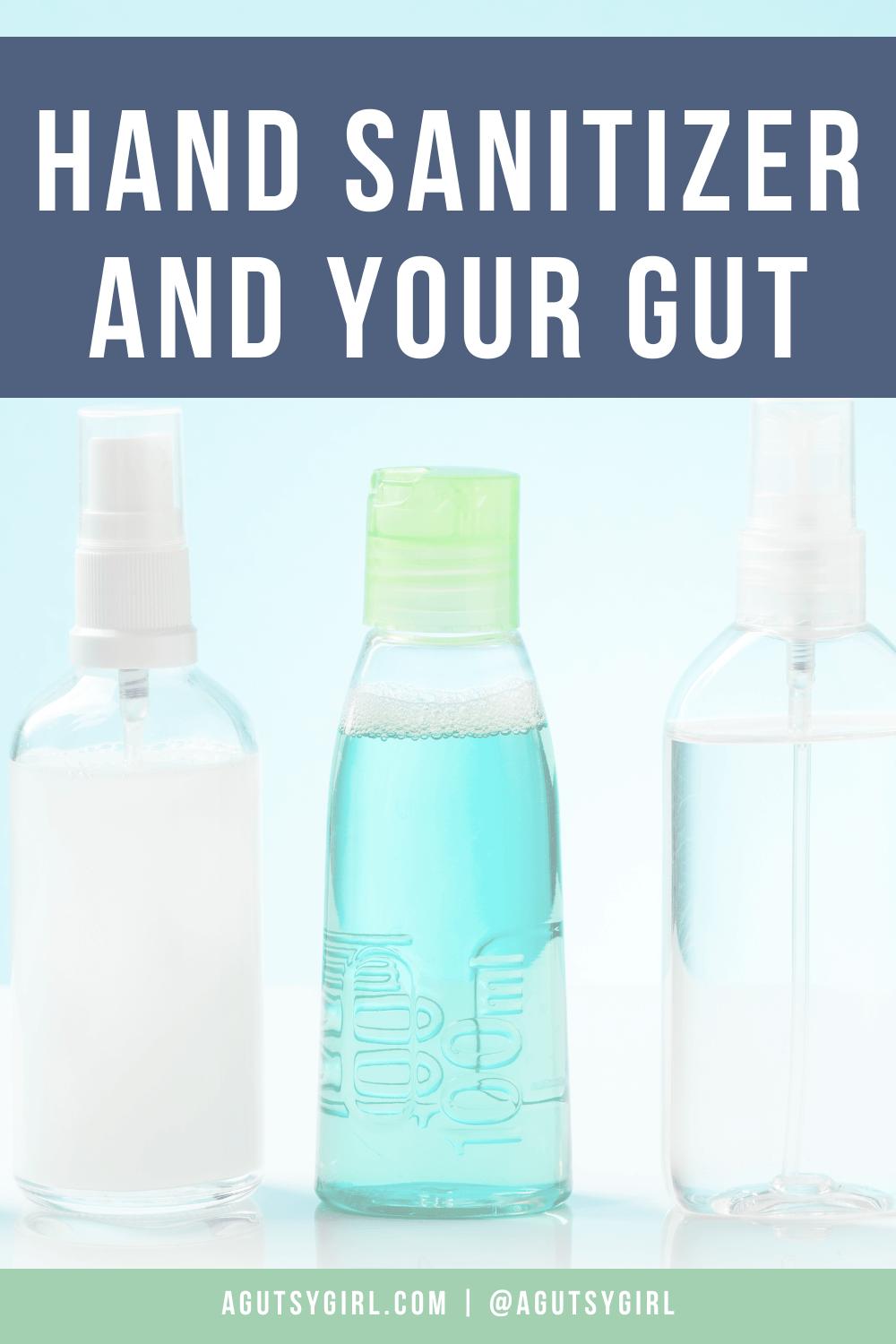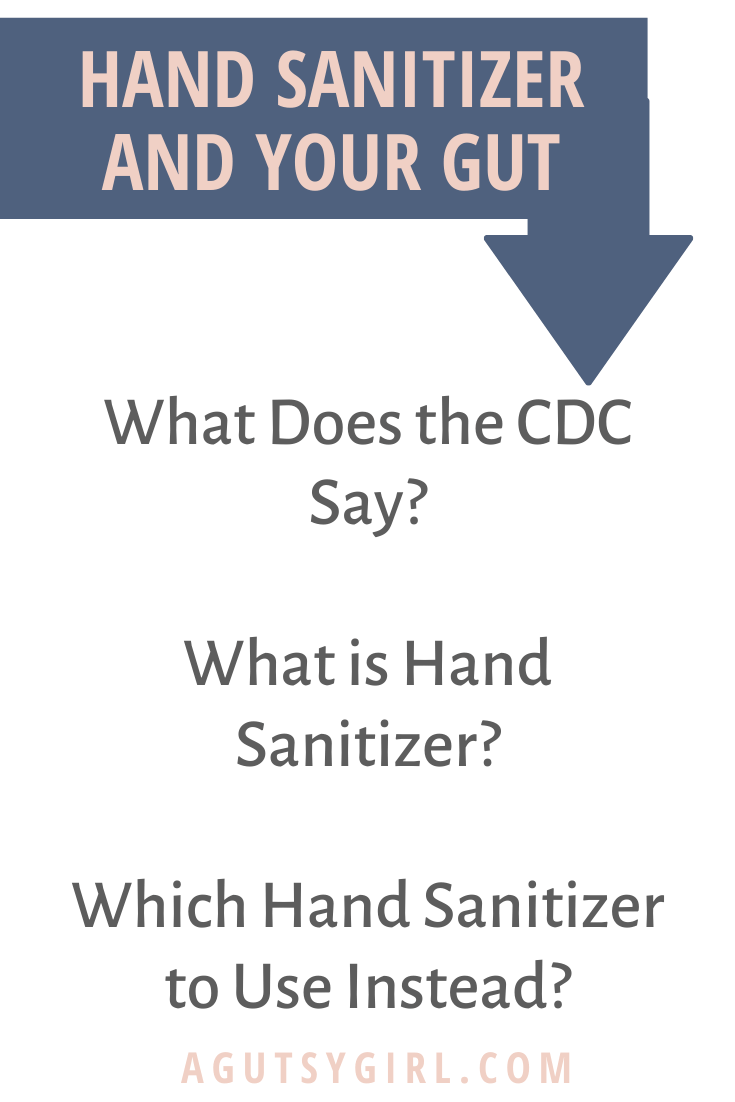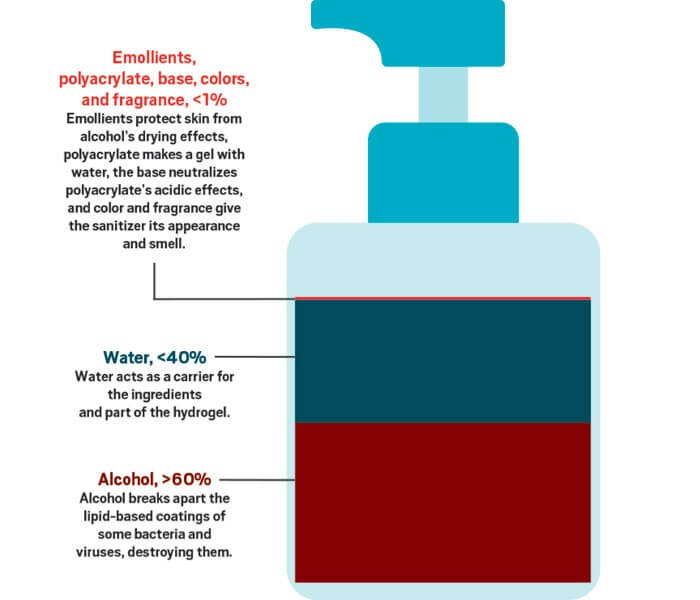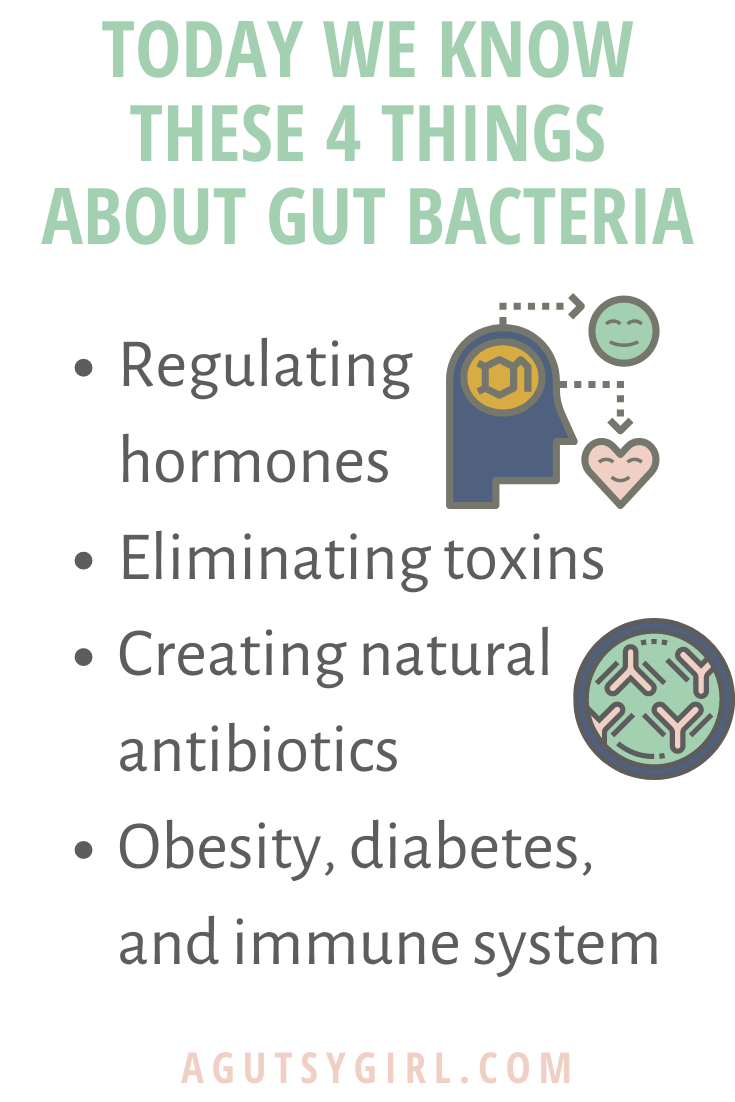Many of you have been asking about hand sanitizer and your gut. Today we are digging into the topic.
I have always had thoughts about hand sanitizer.
Before the virus, I never carried any sort of sanitizer along in my car or purse. In fact, we never bought it at all; period.
This is because I knew that the role of a hand sanitizer is to kill all bacteria. The keyword in that statement is all.
When we need to kill bacteria, hand washing suffices because overdoing it leads to lower immunity since all bacteria equals the good bacteria, too.
But I couldn’t help myself in really wanting to explore this topic more now that hand sanitizer is everywhere. It is recommended constantly, no matter what. When you step into any establishment, there it is – hand sanitizer.
And because of all the fear, even I have hand sanitizer spray and wipes in my car.
Before I keep on keepin’ on with this all, I knew it was necessary to really dig in and understand more about hand sanitizer and the gut.
So here we go.
Hand Sanitizer and Your Gut
Click HERE to save this post for later.

Hand Sanitizer Conclusion
I’m going to start with my conclusion today, and then you can read on for more.
The hand sanitizer craze can be damaging for two main reasons:
- The fact that it kills all bacteria; the good and bad.
- When it contains harmful ingredients, then it’s toxic for the body, which is damaging to the microbiome.

What Does the CDC Say?
The CDC still recommends water and soap as the best way to prevent the spread of infections and illness. But, “If soap and water are not available, CDC recommends consumers use an alcohol-based hand sanitizer that contains at least 60% alcohol.”
And honestly, I think that’s a fair statement.
The CDC is not saying “use only hand sanitizer,” nor is it saying, “Purell is the only sanitizer that works.”
What is Hand Sanitizer?
A hand sanitizer is simply a liquid, gel, or foam generally used to decrease infectious agents on the hands. It is the option people choose when they don’t have access to warm water and soap and/or are on-the-go.
Here is the baseline for what most hand sanitizer’s on the market consist of.

(source)
At first glance, it appears there is nothing wrong with hand sanitizer.
After all, aren’t we all just using it now to keep the Virus away?
Not so fast.
There are two reasons this “simple” equation depicted graphically can be damaging.
Hand Sanitizer Kills ALL Bacteria
First, if the theory is that we are using hand sanitizer to kill bacteria to stop the spread of the Virus, then you must know the truth.
Hand sanitizer is not that smart.
It does not know if the bacteria it’s wiping away is “good” or “bad.”
It’s simply wiping all the bacteria away.
An Oversanitized World & The Hygiene Hypothesis
In the 1860s, Louis Pasteur and Robert Koch coined the Germ theory, which is the idea that disease is caused by bacteria or microorganisms in the body. The theory led to soap becoming a necessity and large focus on antibiotics to eradicate bacteria.
The obsession with cleansing and cleaning everything began.
However, shortly after that, French Scientist, Claude Bernard, introduced the theory that microbes aren’t inherently pathogenic – it depends on their environment. Instead, particular bacteria build up due to an imbalance in the ecosystem.
Much later, in the 1980s, the Hygiene hypothesis, was introduced. This states that a lack of exposure to germs might suppress immune system. And furthermore, we need more exposure to beneficial bacteria.
Today We Know This About Gut Bacteria

And today, we now know that gut bacteria plays a role in these 4 things:
- Regulating hormones
- Eliminating toxins
- Creating natural antibiotics
- Obesity, diabetes, and immune system
And if 70-90% of the immune system lies within the gut, then doesn’t it only make sense for the current Virus (and all others + future ones) that we not continue killing all bacteria?
Wouldn’t the constant use of hand sanitizer negate (at least some of) its benefits?
But it’s not just that hand sanitizer can and does wipe away good bacteria, too.
The other problem with using hand sanitizer 24/7 is that most hand sanitizers out there are made using ingredients that also are not good for the gut microbiome.
Hand Sanitizer Harmful Ingredients
The skin is a good reflection of what’s going on inside the microbiome.
Not only is the skin your largest organ, but it’s also a key detox organ. This means that the skin is involved with elimination, but that also means it can let toxins in.
In fact, did you know that adults carry some 8 pounds (3.6 kilograms) and 22 square feet (2 square meters) of it?
Using hand sanitizers, then, is about much more than just slapping on a liquid and hoping the ingredients “do their job.” Because, what happens when those said ingredients are the toxins we are trying to keep out?

Here are 5 hand sanitizer ingredients to watch out for and avoid:
- Triclosan
- Fragrance
- Phthalates
- Sodium Lauryl Sulfate (SLS), Sodium Laureth Sulfate (SLES)
- Parabens
Triclosan
Triclosan (found in deodorants, antiperspirants, soaps, laundry detergents, toothpaste and hand sanitizers) can be absorbed through the skin and is currently believed to interfere with hormones, especially the thyroid, disrupting their normal functioning. (source)
Fragrance
The majority of synthetic fragrances are derived from petroleum. Common fragrance ingredients, like toluene and benzene derivatives, may be carcinogenic in high doses.
Phthalates
Phthalates have estrogenic properties. And, chemicals with estrogenic properties are thought to affect glucose metabolism and adipose tissue.
Sodium Lauryl Sulfate (SLS), Sodium Laureth Sulfate (SLES)
SLS and SLES are surfactants that can cause skin irritation or trigger allergies. SLES is often contaminated with 1,4-dioxane, a byproduct of a petrochemical process called ethoxylation, which is used to process other chemicals in order to make them less harsh.
Parabens
Parabens have connections to allergies and food sensitivities.
They are a class of preservatives commonly used to prevent the growth of bacteria and mold. Parabens are endocrine (or hormone) disruptors, which may alter important hormone mechanisms in our bodies.
Now What?
And you know what? Even the FDA is becoming privy to the fact that not all hand sanitizers are safe. If you want their full list, click HERE to view.
Now, you’re wondering: Great. Now what? What should I do?
First, you do whatever you have to do to feel good about the situation.
Here are the two steps I have and am taking when it comes to hand sanitizer for our family:
- Halt obsession. I am okay with sanitizing around specific events, places, and people. But I am not okay with having hand sanitizer put on just because it’s available everywhere you look. I think we are programming our children to reach for sanitizer far too much that it has now become the standard thing to do every 10 minutes. I’m not okay with that, so we are working on re-programming this habit.
- Picky and choosy. While I realize that Purell is the only option in many settings, Purell is not what I buy nor is it what I want an obsessive hand sanitizing habit to be formed off of.
And the final step is to go back to the basics and remember exactly what the CDC states: washing your hands with warm water and soap is preferred and recommended over hand sanitizers.
Now, since I do still use sanitizer, here are three I recommend.
Which Hand Sanitizer to Use Instead?
Wellnesse Eucalyptus and Mint Moisturizing Hand Sanitizer
I fully trust Katie, aka Wellness Mama. So when she launched her own personal care company and then THIS hand sanitizer, I was fully on board.
Details: Approved for big and little hands, our natural hand sanitizer kills 99.9% of germs without stripping skin. Soothing eucalyptus and moisturizing glycerin give hands much-needed hydration. All in a recyclable glass bottle.
Ingredients: Ethyl Alcohol, Water, Glycerin, Mentha Piperita (Peppermint) Oil, Melaleuca Alternifolia (Tea Tree) Leaf Oil, Eucalyptus Globulus (Eucalyptus) Leaf Oil
Buy it HERE.
Primally Pure Hand Sanitizer
Primally Pure is another company I fully trust for skincare products. They have one hand sanitizer HERE.
Details: This hand sanitizer helps defend against harmful bacteria and viruses with a potent blend of organic ingredients, including 63% grape alcohol, immune-boosting essential oils, healing aloe vera and soothing vegetable glycerin to powerfully protect your delicate skin. It also comes in a recyclable glass bottle.
Ingredients: Grape alcohol*, Aloe vera juice*, Vegetable glycerin*, Essential oils of Lavender*, Lemon Eucalyptus*, Palmarosa*, Tea Tree*, Oregano*, and Thyme*
Buy it HERE. If you choose this one, you can use my code, AGUTSYGIRL, at checkout to save 10% off your entire first purchase order.
Everyone Hand Sanitizer Spray Lavender Aloe
The EWG rates this one high, and I love the smell of it.
Details: Everyone hand sanitizer spray lavender+aloe is never tested on animals.This product is gentle enough for the recommended repeated use.Everyone hand sanitizer spray lavender+aloe is 99.9% effective against most common germs.This product can help to decrease bacteria on skin is certified gluten-free and non-gmo
Ingredients: Ethanol 62%, Inactive Ingredients: Purified Water, Lavandula Angustifolia (Lavender) Essential Oil, Organic Aloe Barbadensis Leaf, Glycerin
Buy it HERE.
Sources: HERE, HERE, HERE, HERE, HERE, and HERE.
So what do you think?
If you liked this post, you might also enjoy:
Xox,
SKH
🤰 bloating be gone! weight loss through optimal gut health for women
💃ʜᴇᴀʟ ʏᴏᴜʀ ɢᴜᴛ. ʜᴇᴀʟ ʏᴏᴜʀ ʟɪfe.
🫶🏻 founder gutbyome.com


![Am I Sick [How to Heal the Gut with No Previous Knowledge]](https://agutsygirl.com/wp-content/uploads/2013/07/bloat-featured-agutsygirl.com-copy.png)




Sorry, but hand sanitizer does not kill “ALL” bacteria.
It’s useless against clostridium difficile — the main bug responsible for cases of diarrhea — which can be deadly!
The only things that work for c. difficile are bleach or plain ol’ soap and water. And I say this as someone who had diarrhea for over a year until an OAT test showed elevated levels, despite a negative stool test.